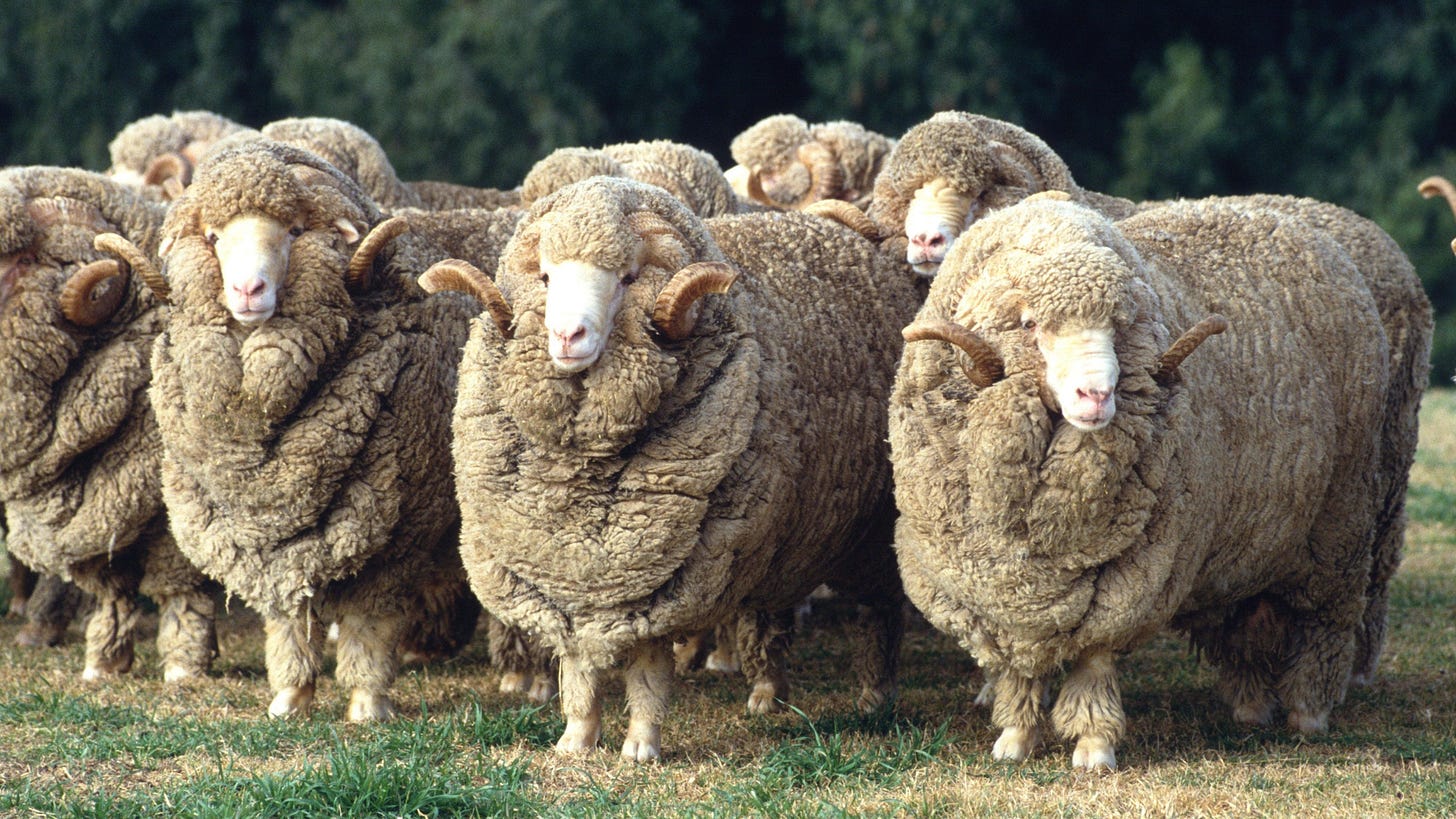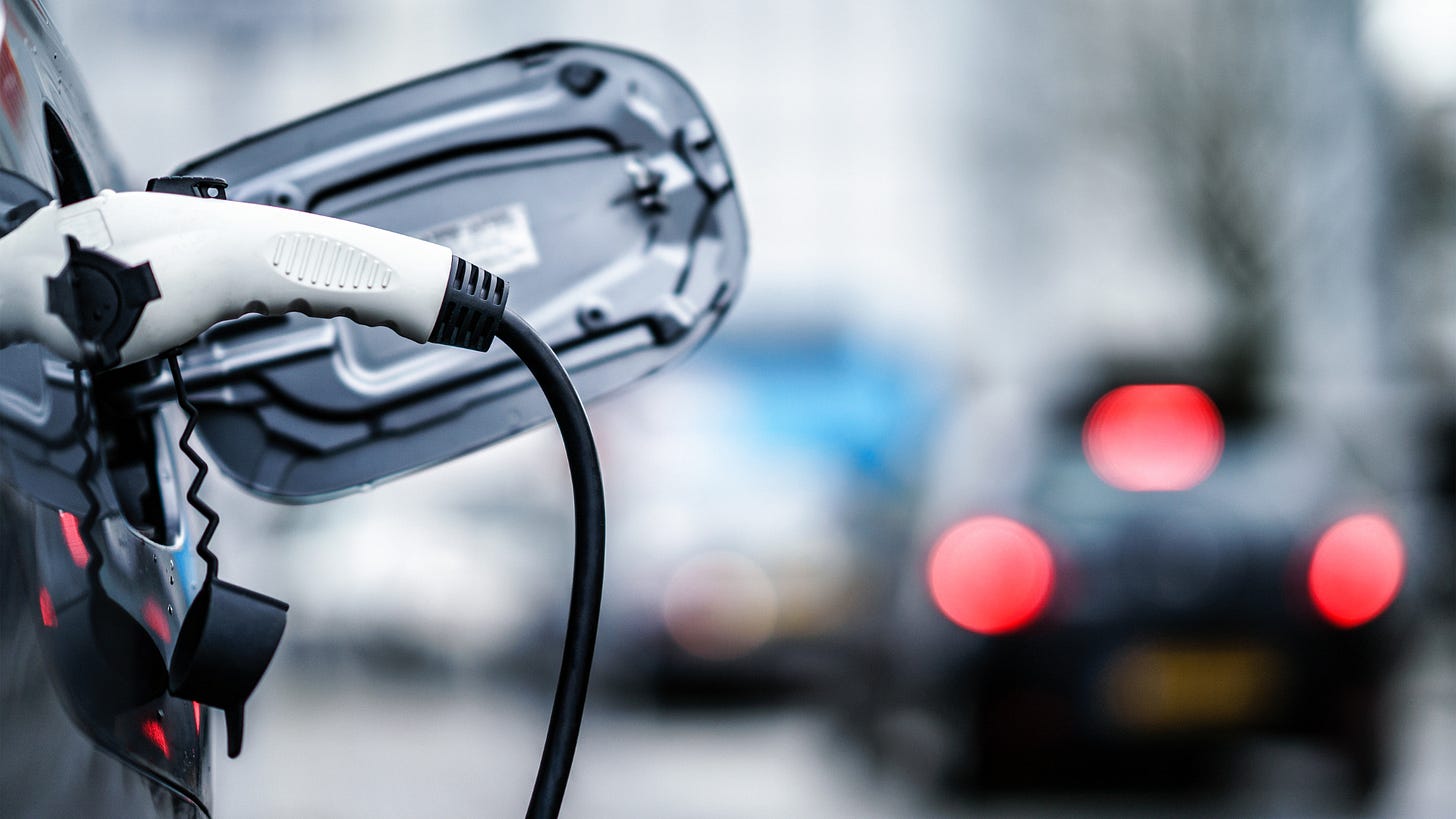Solar panels lead to better...wool?
Sheep and solar panels, our favorite foods at risk, and how to find climate-friendly rebates
Last week, Michael Sheldrick shared some of the inspiring climate wins and disheartening setbacks that are happening in Western Australia. Just one week later, there’s more good news!
In the Perth suburbs where Michael grew up, Western Power is launching five new community batteries. 13 other batteries have already been installed, which together help store excess energy from the rooftop solar in the area. Over 40% of the homes served by Western Power have rooftop solar, with 30,000 new systems being installed last year alone.
“Community batteries are a smart solution that benefits both the community and the network. It’s a win-win for Western Power and customers,” writes Sam Barbaro, Western Power’s CEO.
There’s a surprising fringe benefit for merino sheep who graze amidst solar panels, a new study from Australia found: those sheep had better wool compared to sheep grazing on traditional pastures. I am an avid knitter and lover of merino wool, so this is great news!
A three-year study following nearly two thousand sheep found the wool from sheep grazing under solar panels was stronger and grew faster. Scientists attribute this to the year-round nutrition provided by the vegetation growing in the micro-habitats created by the shade of solar panels. The solar panels also offered the sheep a covered place to shelter from both the sun and from storms. The sheep experienced no negative health impacts, and the area does not need to be mowed by humans, as the sheep graze around the panels themselves.
A smaller, two-year study conducted on 24 ewes in France had similar results. “The thermal comfort of the animals improves significantly, and the availability of quality fodder increases, among other benefits,” noted researcher Véronique Deiss.
For more on “panel sheep,” watch this brief video on a Wellington sheep farm that includes the following on-the-nose comment from sheep farmer Tony Inder:
“When this solar farm was built next to us, I just thought, ‘Well, that’s land’s wasted now. This is the last mob of sheep that’ll ever graze on this land again.’ But turns out that was all wrong. Now there’s actually more sheep grazing here!”
This is a great story of how agriculture and green energy can not only co-exist but benefit each other.
Earlier this summer I wrote about what record-breaking heat was doing to rice crops across Japan and Asia. Now we’re seeing matcha in short supply worldwide, thanks to extreme heat in Japan that has decimated crop yields -- at the same time as demand has been increasing worldwide.
One farmer in the Kyoto region says his yield dropped some 25 percent this year after heat damaged his bushes. Matcha is made from crushed tencha tea leaves, and a kilogram of those leaves recently sold at auction in Kyoto for a full 170 percent more than last year - 8,235 yen per kilogram, which is around US$55.45. And that's not all ...
Bananas still aren’t safe from climate change, as warming temperatures expose them to humidity and disease. Experts forecast that in coming decades bananas will be both scarcer and more expensive. “Bananas are the fourth most important food crop globally, with more than 400 million people relying on the fruit for 15% to 27% of their daily calories,” Time reports.
Almonds are also in short supply worldwide currently, also thanks to warming temperatures and water shortages. This led the Daily Mail to worry about the iconic British dessert the Bakewell tart - which contains raspberries and frangipane, an almond cream. “Prices are unstable, supply is uneven, and the official outlook is being questioned,” one trade publication wrote of the almond.
As I often say, everyone already cares about climate change – but they might not know why, and our job is to help them. So if you know a matcha addict, or someone who loves snacking on bananas or almonds, tell them about what you just learned!
Many cities and counties -- as well as municipalities and townships, utility companies, states, provinces and countries -- offer climate-friendly rebates, credits, and even interest-free loans. They can help retrofit your house to reduce energy use, purchase energy-efficient appliances, electrify your energy use with a heat pump or an EV, or help protect you from climate impacts like heat and flood. But they can be hard to find!
This week, take a few minutes to google the name of your city, region, and country (you will probably have to do these separately) along with “rebates OR incentives OR grants OR subsidies” and then whichever of these words you’re interested in: “efficiency, retrofit, heat pump, EV, clean energy, clean vehicle, electrification, solar, wind, climate adaptation.” See if there are any programs or opportunities you could use or, if not you, then someone you know: and share that information!
If you live in the United States and are in the market to buy or lease an electric vehicle, there’s a time-sensitive opportunity for you. The federal electric vehicle tax credit will expire on September 30, 2025. The credit provides up to $7,500 on a new qualifying EV and $4,000 for a used one, and Kiplinger has put together a comprehensive article that details eligibility requirements, income limits, qualifying vehicles, and more. If this is relevant to you, don't miss the chance: get it done this week!









Thanks for your update I really appreciate to read them both the good and not so good stories.
I spend a lot of my time looking up and reading about climate both data, solutions, issues etc. but often the stories that you bring are new to me so thanks a lot.
I'm looking forward to many good "stories", information's and "angles" in the future..
Love how stacking functions for natural systems logarithmically improve them. We can do more of that. Just needs the will.